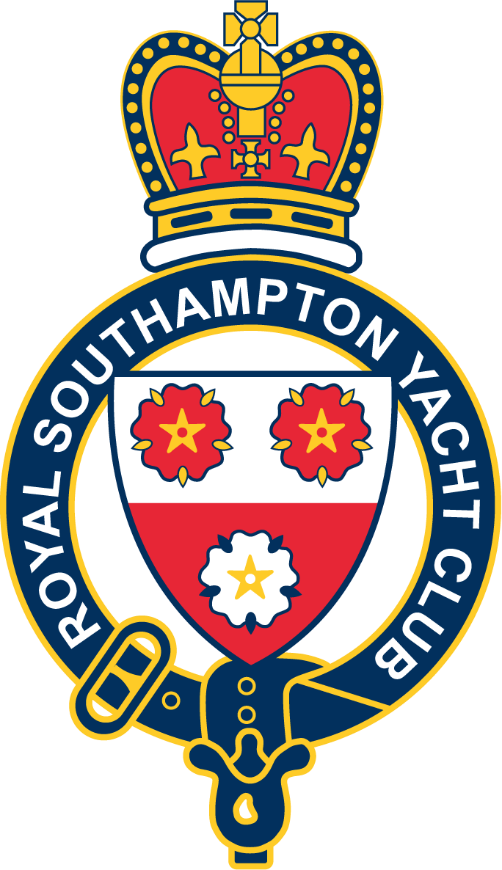

Royal Southampton Yacht Club
A warm welcome awaits you at Royal Southampton Yacht Club, the friendliest yacht club on the Solent.
Located on the Beaulieu River in Hampshire in an area of outstanding beauty, the RSYC’s Clubhouse at Gins has easy access to The Solent and boasts a unique riverside clubhouse with outstanding views and excellent facilities.
The Yachter available in The Clubhouse and by clicking here.
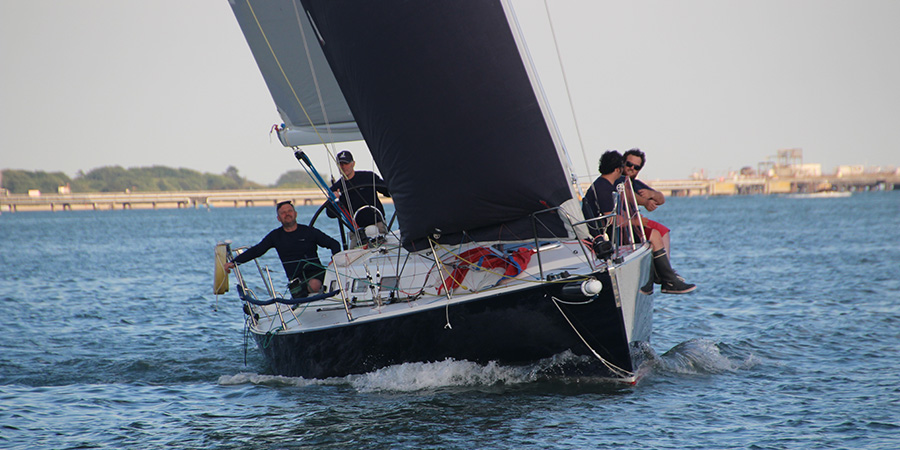
We are accepting new members and joining couldn’t be simpler!
If you already know some members of the RSYC, they can be named as your proposer and seconder on your application form. Once processed and approved you will become a Full Member straight away.
If you are new to the Club without a proposer or seconder, simply complete the form without this information and you will become a Provisional Member. At the next scheduled House Committee your membership will be put forward for election to Full Membership.
Latest events
All the latest events both on the water and in the Clubhouse
- 4 Jun Pilates Class
- 6 Jun Pilates Class
- 6 Jun Lunch to remember D Day 80
- 7 Jun Royal Southern Yacht Club Summer Series June Regatta
- 8 Jun Beaulieu Series Race 4
- 11 Jun Pilates Class
- 13 Jun Pilates Class
- 13 Jun MDL Summer Race 1
- 14 Jun Spanish Paella with Specials Board Dinner
- 15 Jun Royal Southern Yacht Club RYA Match Racing
- 16 Jun Father’s Day lunch with Live Jazz
- 18 Jun Pilates Class
The RSYC is renowned for its year-round racing in Southampton Water, The Solent and beyond, offering opportunities for both Fully Crewed and Double Handed series. Members also benefit from organised rallies, cruising with friends, free use of dinghies and paddle boards from the Clubhouse, and a free year round water taxi service to and from the walk-ashore pontoon.
Meet. Eat. Drink. Relax.
RSYC, one of the oldest yacht clubs in the UK, and is renowned for its friendly and welcoming ambience. Visiting yachtsmen and motorboating guests can enjoy the peace and tranquillity of our pontoon or a mooring overlooking areas of wetlands with an abundance of wildlife, and views out to the Solent. If you are lucky you may see the sea eagles, kites or marsh harriers, or our resident seals. We have all the facilities for visitors and a welcoming bar and restaurant area to relax and dine. Our bosun offers an all-year-round water taxi service.
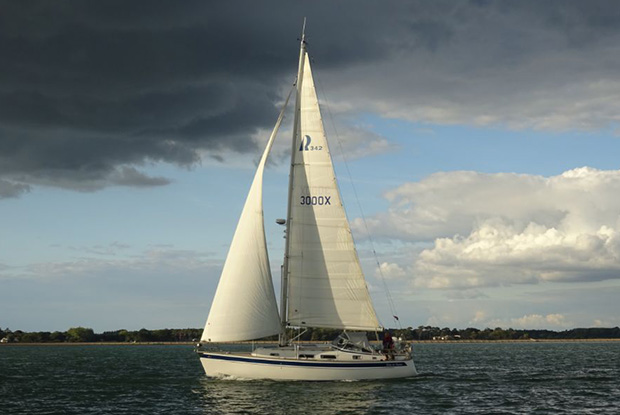
The origins of the Royal Southampton Yacht Club go back to the West Quay Amateur Regatta Club in 1858 , and which was renamed the Southampton Amateur Regatta Club in 1862 . Frequent races were held in the waters opposite the old West Quay, before the extensive development of the Southampton waterfront.
For further information on membership, reservations or general inquiries.
Members area

Random Building
- 1886 – The Royal Southampton Yacht Club House, Hampshire
- Architecture of England
- Architecture of South East England
- Architecture of Hampshire

The Royal Southampton Yacht Club is one of the oldest established in England, receiving its Royal Charter in 1875. In 1885 a new and imposing Clubhouse was developed in Above Bar, Southampton, which stood until 1957 when the Club was relocated to Northlands Road.
Share this:

- CLASSIFIEDS
- NEWSLETTERS
- SUBMIT NEWS

- Latest videos, from 2023


- CLASSIFIEDS
- NEWSLETTERS
- SUBMIT NEWS

Boats for sale
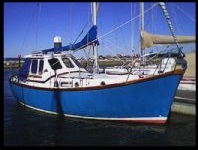
HRH Prince Michael of Kent visits Royal Southampton Yacht Club
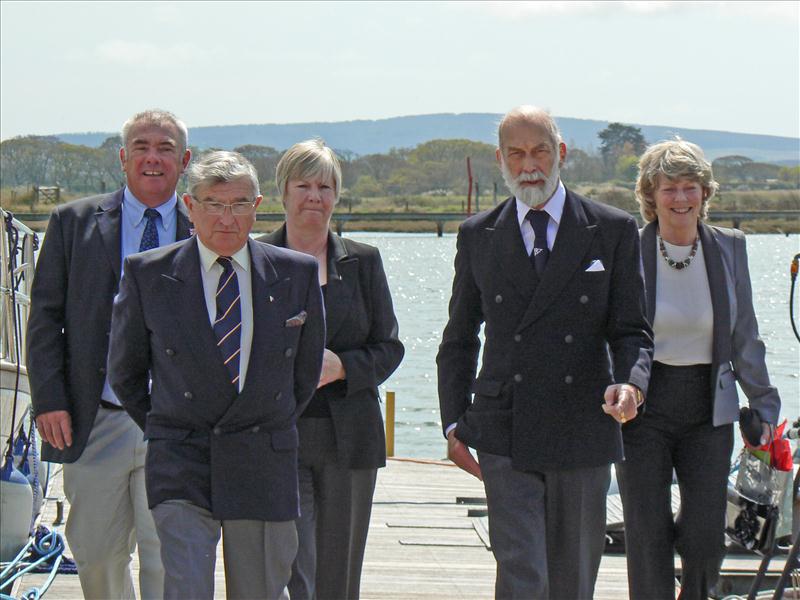
Related Articles
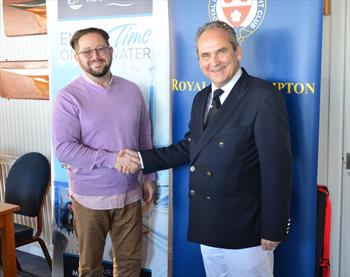
Upcoming Events

Club History
A history of the royal southern yacht club est. 1837.
At almost 200 years of age, the Royal Southern boasts a rich history of toil and ultimate success – the proof of which stands in the excellence of the club today. Read below to delve into our past.
It is hardly necessary to emphasise that these pages do not pretend to do more than give some glimpses of the Club’s long, sometimes stormy and hazardous passage since its birth in 1837. Much has been omitted. Perhaps the most serious omission is the absence of any attempt to record the debt which the Club owes to all those who, from that day to this, have given their time, skill and imagination to all the planning, working and worrying which has succeeded in building and growing the Club which we are able to enjoy today.
To them, perhaps, we might just apply Christopher Wren’s famous epitaph: “If you require a monument, look around you”.
Our club came into existence in 1837

So said Henry Ford, but whether we agree with him or not, it is a fact that the uncertainties and vicissitudes of life demand that we concentrate on peering into the future rather than over our shoulders into the past. Clubs are no exception, but perhaps, after 175 years, our Members can justify the indulgence of nostalgia. That apart, as most yachtsmen have learned, often expensively, there is value in a glance astern.
When our club came into existence in 1837 it was called the Royal Southampton Yacht Club. It was ‘established by a party of gentlemen, at a meeting convened for the purpose of ascertaining if the formation of a yacht club in this beautiful and important town would be desirable and what amount of support it would be likely to receive from the resident gentry, many of whom possessed yachts and might wish to avail themselves of privileges always granted to these clubs.’
The Young Queen Became Patroness In 1838.

In its early years, it appears that the Club’s only activity seems to have been organising its annual regatta, its expenditure confined to the expenses of that regatta and the rent of a room for its Secretary. At the time, this somewhat limited activity was common for many clubs and made it possible for the comparatively small number of large racing yachts to move in stately progression around the coast, from one regatta to the next.
Within a year of its formation the Club was honoured by the appointment of H.M. Queen Victoria as Patroness and of course retains to this day a highly prized association with the Royal Family, as our former Patron was HRH Prince Phillip formerly The Duke of Edinburgh. In 1840 it was granted the privilege of wearing the White Ensign defaced with the Coat of Arms of Southampton.
Resigning in 1843 to attend to his business interests in America, Commodore Weld was succeeded by General Sir Francis Nathaniel Conyngham, 2nd. Marquis, an Irish peer who held various offices of state in England before becoming Vice-Admiral of Ulster. Having no funds in hand and wishing to stage an enlarged regatta, the Club’s Secretary, James Knight, persuaded its Members to increase its catchment area, its profile and its entrance fee, altering the name to the Royal Southern Yacht Club to embrace it’s greater status.
Even as late as 1855, the Regatta only lasted two days and had about 15 starters, but they were large vessels by modern standards and it was not uncommon for one race to be for yachts over 40 tons.
8th August, 1846, the Royal Southern Clubhouse was opened

It was, and is still, a truly splendid building on Town Quay, exactly opposite the entrance to Southampton’s Royal Pier. It has been described as the most beautiful Victorian building in the City.
The opening was clearly a notable occasion and the Club obviously entered into occupation with considerable panache including firing a Royal Salute fired from the battery of the Secretary, whose office adjoined the building.
Appearances were deceptive however. The building did not belong to the Club and indeed, there was no formal tenancy agreement, nor had the rent been settled. It had been built by Robert Wright, a Vice-Commodore of the Club, whose portrait hangs to this day in the Club. The annual rent was subsequently set at £350.
On the retirement of the Noble Marquis in 1847, he was succeeded by James Brudenell, 7th. Earl of Cardigan, who served as Commodore for 21 years. A man of fierce ambition and matching temper, at the time he assumed the Club’s highest office Cardigan was already commanding a cavalry regiment and is perhaps most widely remembered for the notorious charge of his Light Brigade at Balaclava in 1854, in the face of the Russian artillery.
What is less well reported is that he conducted his Crimean campaign from aboard his steam yacht, Dryad, in Balaclava harbour, a yacht that allegedly flew the Royal Southern Yacht Club colours throughout the hostilities.
Delivered to the Crimean port by Cardigan’s brother-in-law, Hubert De Burgh, his vessel was described as: ‘a trim little pleasure craft, equipped as if for Cowes Regatta, with comfortable saloon and cabins, running water and elegant furnishings, a French chef and cellar of champagne.’
Despite appearances, the Club seems to have lacked sound financial foundation and within a few months of electing so distinguished a Commodore, it had to make a levy on its Members to clear debts of the order of £1500. Not surprisingly, the Members decided that they could no longer afford a Secretary.
James Brudenell, 7th. Earl of Cardigan, served as Commodore for 21 years

Significant perhaps, is a special note in the Club’s file to the effect that he had been saluted from the Club House with 11 guns; this record may perhaps have been the result of the Commodore’s forthright assertion that he was not always properly received at the Club.
Who knows the effect of such a salute fired from a building with frontage to what must have been a busy street full of horse traffic!
His Lordship’s influence in high places was, however, undeniable and soon after taking office, he obtained for the Club the privilege for Members which it still retains of wearing the un-defaced Blue Ensign.
The rent of £350 per annum was proving beyond the Club’s means, but thanks to the generosity of Vice Commodore Wright it was reduced in 1849 to £200 per annum, until the state of the Club’s finances improves. It is interesting to note that although the Club’s financial state clearly left much to be desired, it did not deter the Committee from appointing one E.D. Leahy portrait painter to the Club.
Nor indeed did the Members show any lack of spirit at this time when they considered a threat by a competitor to sue the Club for the 50 guinea prize for one of its races. They not only pledged themselves to defend any such proceedings but demanded that the threat be withdrawn. Cardigan would have been proud of them!
Lady Cardigan, asking the Club to take into consideration her application to be elected Commodore.

It is clear that all was not well with the management of the Club, for in 1856, what must seem to us a strange arrangement was made under which the Club was “framed” (it was so described) to an individual who undertook to pay all outgoings, including the rent and to receive all income from the bar and billiard tables, as well, it seems, as the Members’ subscriptions.
This apparently did not prove a success and a few years later Lord Cardigan was informed that the Committee was considering moving to cheaper premises or, indeed, winding up. This crisis seems to have been brought about by the resignation of 24 members. We do not know the size of the membership in those days, but for some years the average attendance at General Meetings had been six, so it may well be that the membership, though no doubt individually well to do, was modest in overall number.
These were sad times indeed. Yet another levy of two pounds ten shillings per head and then what must have seemed the cruellest blow of all, the closing of the clubhouse. Poignant must have been the passing at a General Meeting of a formal resolution that, the Royal Southern Yacht Club still exists, notwithstanding the present House being closed. After a few months in which it was homeless, the Club rented part of the Pier Hotel, furnished, for a term of three years. If the Committee heaved a sigh of relief at finding a safe harbour, they were swiftly disabused, for in less than six months the Club was expelled from its quarters, consequent on the seizure of all the furniture belonging to their landlord under a Bill of Sale.
Once more on the street, the Club then took refuge in a room over Forbes & Bennett’s shop and once again a farming-out arrangement was made. This tenancy lasted less than a year, followed by brief occupancy of a room whose address is unknown, but in 1865, the Club moved into a large room in the Dolphin Hotel, a venerable building still very much in existence just below Southampton Bargate. It is not clear how long this occupation lasted but in 1877 the Club’s Secretary rented a house in the best part of the High Street and ran it as the clubhouse. The whereabouts of this house are unclear, but apparently there were to be no games on Sundays Good Friday and Christmas Day, whilst billiards and whist were among the more important activities of members within the better yacht clubs in those days.
The demise of Lord Cardigan in 1868 must have represented a milestone in the Club’s history and even if recollection of his long term of office was fading, in 1874 they must have been revived when, the office of Commodore having once again become vacant, a General Meeting considered a letter from Lady Cardigan, asking the Club to take into consideration her application to be elected Commodore.
The Club have no lady members at this time
It almost goes without saying that not only did the Club have no lady members at this time, but that no less than 50 years later a proposal to provide ladies toilets accommodation was withdrawn from a General Meeting.
Be that as it may, the reply, which was sent to Her Ladyship, can hardly fail to arouse admiration for the draughtsman and deserves to be quoted verbatim.
The Club will always retain a lively feeling of gratitude and respect for their former Commodore, the Earl of Cardigan and that the Members are fully sensible of the compliment paid the Club by her Ladyship’s suggestion that she be elected to the office now again vacant. But the members present at this meeting are unanimously of the opinion that the election of a Lady to the office of Commodore would be so inconsistent with all precedent and so obviously inconvenient in practice that they regret extremely their inability to give effect to her Ladyship’s flattering proposal.
It could not, however, be suggested that her Ladyship did not qualify as a yacht owner since she appears in Lloyd’s Register of Yachts as the owner of Screw/Schooner Sea Horse 306 tons, 143 ft. x 21 ft. x 10 ft. Iron built in Glasgow in 1867, powered, remarkably, by a 60 horse power inverted 2 cylinder engine, 30” diameter by 22”. stroke.
It seems that the Club remained in the High Street house until 1886, when the wheel turned full circle and it negotiated a lease of Bugle Hall, the house originally built for it on the pier head, at an annual rental of £100 for 7, 14 or 21, years, with an option to buy the freehold at £2.700 during that term. What a commentary on the stability of sterling at that time and bearing in mind its many ups and downs during the past years, it is noteworthy that the Secretary, who retired in that year, had served for no less than 30 years.
Committee Buys Freehold for £2,000
It is clear that by this time, the Club was giving some thought to what would now be termed its image and declared that the livery of the Steward and two manservants should be, tail coats with red cord on trousers. The need to keep servants in their place brought about a letter from the Secretary to a Lieutenant Colonel X it has been brought to the notice of the Committee that X allowed his servant to enter the club and to have luncheon with him. The Committee consider that such conduct is highly offensive to Members of the Club and request that it may not be repeated otherwise Rule 47 must be enforced.
Evidently the defence of the premises against the intrusion of the lower orders continued to cause anxiety, for a few years later, on the instructions of the Committee, the following notice was displayed outside the clubhouse: Members’ yacht captains, servants and tradesmen calling at the Club are requested to ring the Hall Door Bell and await reply.
The Club continued to occupy the clubhouse under its lease for nearly 20 years, but in 1904 came the great day when having authorised the raising of £2,500 by an issue of debentures, the Committee bought the freehold for £2,000. This was indeed a milestone in its history, achieved some 60 years after it had first set foot in the building and an intervening period which had seen it wander so peripatetically and housed in so many temporary quarters. Secure at long last in ownership of this splendid premises, the Club was able to enjoy a few years of relative peace and development.
But what some must have seen as a sinister movement inside the body politic became manifest when the Committee resolved that, members are permitted to introduce ladies personally known to them and accompanied by them to the coffee room and adjoining verandah between the hours of 12 noon and 7 p.m. from 1st June to 30th September, their names and addresses with the name of the introducer to be entered in a book kept for that purpose.
Ladies permitted to enter the Club to view the Regatta Cups

One can instance a written complaint by a member that he had received a letter, accusing him of insulting the Club by hoisting the Club Flag at fore.
The Committee’s response was robust and, perhaps to our eyes, unexpected. It was a demand for the name of whoever had taken the unwarrantable liberty of writing such a letter without the knowledge of the Committee. Not long afterwards the Committee found itself called upon to deal with a, discreditable scene in the card room between two very distinguished members in connection with a game of whist.
At this time, there was no question of ladies being members of the Club or, indeed, of being suffered even to set foot in it. It is not difficult therefore to imagine the exquisite delicacy of the situation which arose, when it seemed likely that members of the Royal Family, and it must be remembered that H.M. Queen Victoria was Patroness of the Club, might be landing at the Royal Pier, immediately opposite the Clubhouse and visit the Club.
Can it have been without some gritting of teeth that the Committee resolved, in the event of any members of the Royal Family landing at the Royal Pier, ladies be admitted to the Club on that day. Those who saw this as the thin edge of an uncommonly sinister wedge were no doubt fortified in their pessimism when, barely six months later, the Committee decided to permit ladies to enter the Club, on Thursday the tenth to view the Regatta cups.
In 1910, H.M. King George V honoured the Club by consenting to become its Patron, in succession to the late King Edward VII.

His yacht Britannia was, of course, a prominent feature of the Solent racing scene, and when her Captain wrote, with what was no doubt regarded as proper deference, to enquire whether it would be in order for His Majesty to fly the Royal Southern Yacht Club burgee on the yacht, the Committee displayed the firmness of purpose already mentioned when it replied, Yes, His Majesty the King will be in order in flying the burgee of the Royal Southern Yacht Club if he or a member of his family is on board. Otherwise the burgee of the Royal Southern Yacht Club should not be used on Britannia.
The shape of things to come is interestingly reflected in a reference to the kindness of Castle Yacht Club in allowing the Club’s Regatta to be held at Calshot instead of Southampton. It was of course, the increasing commercial port traffic which ultimately led the Club to move to Hamble.
Even after the outbreak of the First World War in August 1914, surprisingly the clubhouse continued to be much used. It was evidently much in demand by officers of the Services and it is significant that the figures show substantial increase in revenue for drink and beds, coupled with a fall in subscription and billiard room takings. An interest sidelight on food rationing in the First World War is to be found in a Committee decision that no meat was to be served except in exchange for a ration coupon and six hours notice. Even more poignant perhaps was a ruling that Members not in residence were to be limited to, one large or two small drinks per day.
The unrestrained joy at the Armistice was somewhat offset amongst Members by the production of accounts for the war years, when it became painfully evident that there were alarming arrears of maintenance and, part of the building was absolutely dangerous. The financing of the essential repairs caused considerable concern and was not accomplished without great difficulty. Another topic of concern was a formal proposal at a General Meeting not only to establish both a ladies room and ladies toilet accommodation, but also to permit members to introduce ladies as guests during such hours and to such portions of the premises as the Committee might decide. This alarming proposal was swept under the rug on the basis that it would be dealt with in connection with the revision of the Rules.
During the next few years the Club’s finances caused increasing anxiety, losing more money yet more urgent repairs were needed and there were insufficient liquid assets to enable the Club to carry on. The gravity of the situation is underlined by the emergency of a suggestion that one of the billiard tables be sold and a billiard room converted for the use of wives and daughters of members. Although this desperate remedy was not adopted, it made it clear that the cloud was looming large!
Indeed, the very next year, the Annual General Meeting’s Agenda included a proposal to provide a writing room for lady visitors. That the rearguard was still full of fight is shown by its success in carrying a resolution that the Committee consider the question of a Lady Visitors Room, but not to interfere with the present billiard rooms. What is more, they held the pass, for the next year’s Annual General Meeting was told that in response to overwhelming opposition, the proposed admission of ladies was dropped. In 1925 a suggestion that, having regard to the Billiard Room takings, one table be given up and half the room used as a lounge was defeated.
It is interesting to note that at this stage in the life of the Club there had been no significant increase in its revenue for nearly 20 years and there is evidence that the membership was no more than 250. Also in 1925 came the first hint of change, when the Committee considered favourably a suggestion to have a second clubhouse at Hamble for the convenience of yachting members. Another straw in the wind is to be found in the efforts of the Club to gain support for a movement to protect the anchorage for yachts, evidently against proposals of the Southampton Harbour Board.
1905 First Motor Boat Race

By 1909, the Club had run its first Metre Regatta and in 1924, ran its first regatta for XODs and so were established the elements of club activity, sailing and motorboating, that have underpinned the life of its Members throughout the last century. Curiously enough, there are few clues to the size of the membership up to this time, but in 1909 a copy of a letter gives its strength as 240 members and 92 yachts.
In these days the tone of letters addressed by the Committee to offending Members is worthy of remark. To a Member who complained that he was served with rotten eggs for his breakfast, the Committee’s reply, while regretting the accident concludes, they must call your attention to the tone of your letter and should further complaints reach them from you they request that they may be couched in different terms.
What might be regarded as a somewhat autocratic style is perhaps more understandable if one bears in mind that in those days the Committee normally included a majority of Major-Generals, Generals, Colonels and Naval Captains, generous leavened with Noble Lords and Knights of the Realm.
1934 - Two years later many Members had resigned as a result of the economic depression and a year later membership had fallen to 164.

In 1934 another Special General Meeting was called to authorise the sale of the Southampton clubhouse and the purchase of alternative facilities at Hamble, a revolutionary proposal on which, in the event, a decision was postponed until the following year. When that meeting arrived, the Flag Officers’ recommendation was made, although it is not difficult to feel great sympathy for those who had to advise the membership on such a step. However, no decision on the issue is recorded in the Minutes. There followed a period in which entrance fees were suspended, and despite an increase in membership, operating losses continued, accompanied by understandable exhortations to recruit new members.
Seemingly out of a clear sky, Members were told that their Committee has taken a lease on premises at Hamble, the rent being guaranteed by some of the Members personally, as the Club could not afford to do this on available funds, and with no more than 25 Members present, the meeting agreed to take over the lease. It is clear that the Hamble premises which consisted of two cottages named Quai and Magnolia were to constitute no more than an addition to the Southampton clubhouse and various changes in the Rules were made to take account of the Hamble Annex, as it was then called.
At the Annual General Meeting in April 1938, gloom understandably predominated. Local Members for whom the Club was mainly run were not making use of the Southampton clubhouse and it was said frankly that it would be honest to wind up the Club while it was still just about solvent. On the strength of guarantees by two Members, the meeting agreed to take a third cottage at Hamble. No more than two months later a Special General Meeting, after considerable debate, made what must have been the extremely painful decision to close the Southampton clubhouse within three months and offer it for sale.
1930 - Cup given by H.M. King George V had been won by a member of the Club, Lord Camrose, in his Cambria
In 1927 there appeared an encouraging financial omen in the form of a substantial increase in receipts. The following year saw the resolution of the Great Billiard Room Controversy, it had been divided to make an additional lounge, and Members attending the Annual General Meeting in the subsequent year were told, with perhaps a scarcely concealed air of triumph, that the change had been extraordinarily successful.
It was about this time that the development of the Port of Southampton caused some among the Committee to contemplate the possibility that the Club would be constrained either to establish an annexe elsewhere or even leave the City altogether and the next few years were to see this, to many, a painful possibility, becoming increasingly urgent.
In 1930 two interesting and conflicting indications of the Club’s situation are afforded by the publication of an alarmingly weak balance sheet simultaneously with the announcement that at the Regatta at Cowes that year, a cup given by H.M. King George V had been won by a member of the Club, Lord Camrose, in his Cambria.
Having joined the Club in 1948, it was in 1952 that H.R.H. Prince Philip Duke of Edinburgh graciously accepted the rank of Admiral

Early in the following year the merits of the courageous decision to leave Southampton began to manifest themselves, with membership steadily increasing and reaching 361 by April. The leasing of the Hamble Annex, in parallel with narrow avoidance of insolvency and the imminent prospect of the sale of the Southampton premises all came together as the nation went to war for the second time in the century. The timing could have been better, as the river and village were prohibited from public access and locked down by the War Office for the duration of the war and used by the Admiralty for their small boat fleet and in 1944, the military units that had been based in Hamble marched through the village to embark on barges drawn up on the hard, on their way to the Normandy beaches and D-day.
The Club found itself struggling to survive in a country on a war footing, but two factors brought some relief. Firstly, the vacant Southampton clubhouse had been requisitioned by the Admiralty at a rent which would pay the interest on the Club’s overdraft and effect a modest annual reduction in it and secondly, the Hamble clubhouse was being used extensively by the fighting services. Despite the war, membership in 1942 stood at 253.
With the end of the war, the Committee was authorised to sell the Southampton premises and after what must have been an anxious time, their disposal released a return sufficient not only to clear all the Club’s debts but also to leave it with a few thousand pounds in hand.
For those who carried the responsibility for the management of the Club, the next 15 years must have been a testing time indeed.
Consider the situation in 1947. The clubhouse was held on a lease with no more than eight years to run and it faced the task of establishing itself in Hamble, its new home and of paying its way, but its capital resources were insufficient to embark on the outright purchase of the freehold either of its new clubhouse or, indeed, of any other suitable premises.

In 1956 a new lease for a term of three to eight years could be, of course, no more than a palliative, and it was one which involved the payment of a higher rent and an increase in subscription rates. At the same time, the Club’s persistent operating loses gave considerable concern.
Its ambition to own the freehold of its premises, coupled with unpromising negotiation with Hamble landlords, led to examination of the merits of several other premises, both in Hamble and Bursledon.
The Queen with HRH Prince Philip on the Club pontoon being greeted by the Commodore T.D. Mitchell and Rear Commodore W. Thornback in the mid 60’s
All in all, it was a period which must have taxed the patience and dedication of both Flag Officers and Managing Committee.
At long last and with less than five years of its lease yet to run, they succeeded in 1960 in negotiating the purchase of the freehold.
It was financed in the first instance by a bank overdraft repayable within six months, guaranteed by an anonymous Member, the advance to be repaid by an issue of debentures. A slow response to the debenture issue clearly proved an embarrassing one which was resolved by a Member coming forward with an advance on a mortgage of the clubhouse. A measure of the seemingly endless struggle to regularise the Club’s financial problems is to be seen in the fact that it was not until 1970 that this mortgage was repaid from subscriptions for the debentures.
This, coupled with rising membership figures, which had to be firmly constrained, marked a turning point at which the Club was able to embark on a period of sustained improvement and consolidation. Notably, it saw the building of the River Room and the balcony above it, together with a major refurbishing of its kitchens and a bold step forward by the purchase of the land adjoining the premises.
That purchase was to prove a landmark in the Club’s history and face the management with a formidable task in the years ahead, but a gratifying product of the new land was the opportunity for young members to learn to sail. This took the form of the Splash Club with a fleet of over thirty optimist dinghies. This venture went from strength to strength and happily reflected the encouragement of yacht sailing, which had long formed part of the Club’s constitution.
The precursor of the Hamble Week regatta was initiated in 1961, in 1962 on its 125th. anniversary the Club launched the Cowes-Deauville Race and in 1964, one of the country’s earliest marinas was opened as Port Hamble next to the clubhouse, the same year that saw the inauguration of the Club’s house magazine, The Southern. By now, village, river and Club were established as centres of modern yachting and further milestones included the Club’s initiation of the Solent Points Championship in 1968 and its Lionheart Challenge for the America’s Cup in 1980.
Ashore, many improvements had followed, including the purchase of the land alongside the cottages, giving the Club its base for expansion. A new administration block was opened in 1995, followed in 1998 by a sizable and spectacular bespoke clubhouse of some style and architectural merit on the river frontage, overlooking the Solent and Isle Of Wight, the traditional heart of British yachting. Designed by eminent architect and Club Member, John Madin, to provide improved facilities for all members, particularly ladies and young people it was opened by the Admiral and the new building was complemented by better boat and car parking arrangements.
Today’s Royal Southern is a vibrant mixture of every aspect of boating, from ocean sail racing to dinghy racing, cruisers to keelboats, RIBs to motor cruisers and in the past 70 years, membership has risen from a lowly 164, today numbering more than 1600 adult and 200 youth members.
Any yacht club worth its salt knows that its next generation of members and competitive sailors is more likely to be found on the pontoons in Bermudas, than in the bar in blazers and the Royal Southern has an enviable 20-year record of attracting and catering for young sailors and has made a giant stride to offer them more and better facilities.
Royal Yachting Association Volvo Champion Club in 2009

Many yacht clubs run spectacularly successful youth development programmes through Academies, producing the world’s top open match and team racing helmsmen. The Club has now following in these footsteps and established its own Academy, bridging the gap for 18-25 year olds. 2010 saw the first events and training days, with world class coaching, and Members are providing their yachts as a big-boat experience platform, concentrating on getting young people out on the water. Some of the Club’s Academy sailors have already made their mark on the world stage.
The Club has always encouraged reciprocal links but more recently has become a full member of the International Council Of Yacht Clubs, an organisation initiated in 2003 to share views and compare notes in symposia for flag officers and senior managers from peer yacht clubs.
Yachting is truly an international activity and organising racing and cruising, or just managing a premier yacht club poses very similar questions to flag officers, their committees and club secretariats, wherever they may be located. The regular I.C.O.Y.C. Commodores’ Forums are now well established in the programmes of many of the leading yacht clubs in the world and the Royal Southern will host this gathering and the cruise that precedes it, in Autumn 2012, welcoming delegate representatives from the world’s leading yacht clubs in Africa, the Americas, Asia, Australasia and Europe. The Club’s reciprocal links include senior yacht clubs in the UK and around the world, including Barbados, Belgium, France, Germany, Hong Kong, India, Ireland, Monaco, Netherlands, South Africa, Sweden and the USA.
For any Members’ club to have operated continuously for 175 years in an unbroken stream of yachting competition is no small feat and the anniversary of its formation will celebrate yachting in one of Europe’s most prestigious private sailing organisations.
Enquire About
About the bugle.
Built as the home of the Royal Southern Yacht Club in 1846, The Bugle is an iconic landmark building overlooking Southampton’s Royal Pier on Bugle Street, one of the most historic streets within the old walled city. Designed by local architect Thomas Sandon Hack, the Grade II-listed Italianate townhouse is widely regarded as the most beautiful Victorian building in the city and retains many of its original features today.

Following extensive renovation, The Bugle reopens as an exclusive-use venue for weddings, private and corporate events, film and photography shoots and homestays.
2022 REOPENS AS EXCLUSIVE-USE VENUE
After the war had ended, the building was taken over by Southampton University’s Air Squadron, which they used as offices until 2013. In subsequent years the building was left delipidated and in need of a new lease of life.

1944 SOUTHAMPTON UNIVERSITY AIR SQUADRON
Due to its unique location, the building was requisitioned by the Admiralty at the outbreak of World War Two.
1939 POSESSION TAKEN BY THE ADMIRALTY
Following its sale, the building was used as a school and latterly a merchant’s office, before being taken back over by the yacht club towards the end of the century and until the outbreak of World War Two.
1857 SCHOOL AND MERCHANT’S OFFICE
Due to financial difficulties, the club was forced to move an advertisement in the Hampshire Independent in March 1856 offering the club house for sale or let described the building as a “magnificent, substantial freehold building” which “commands uninterrupted views over the Southampton Water, the Isle of Wight and the New Forest”.
1856 THE BUGLE PLACED FOR SALE
The Bugle was designed by local architect TS Hack and paid for by Robert Wright, a Vice-Commodore of the Royal Southern Yacht Club. The building was used as a private members club and venue for large-scale regattas.
1846 ROYAL SOUTHERN CLUBHOUSE OPENS
The Bugle has had a rich and varied history. This is a short timeline of The Bugle’s history.
The History
0333 242 2171
let's connect
1a Bugle Street Southampton SO14 2AL

The Royal Southampton Yacht Club
Ideal venue for, local suppliers.

- Find an object
- Find a dealer
- Fairs and Events
- BADA Friends
The Royal Southampton Yacht Club Cannon
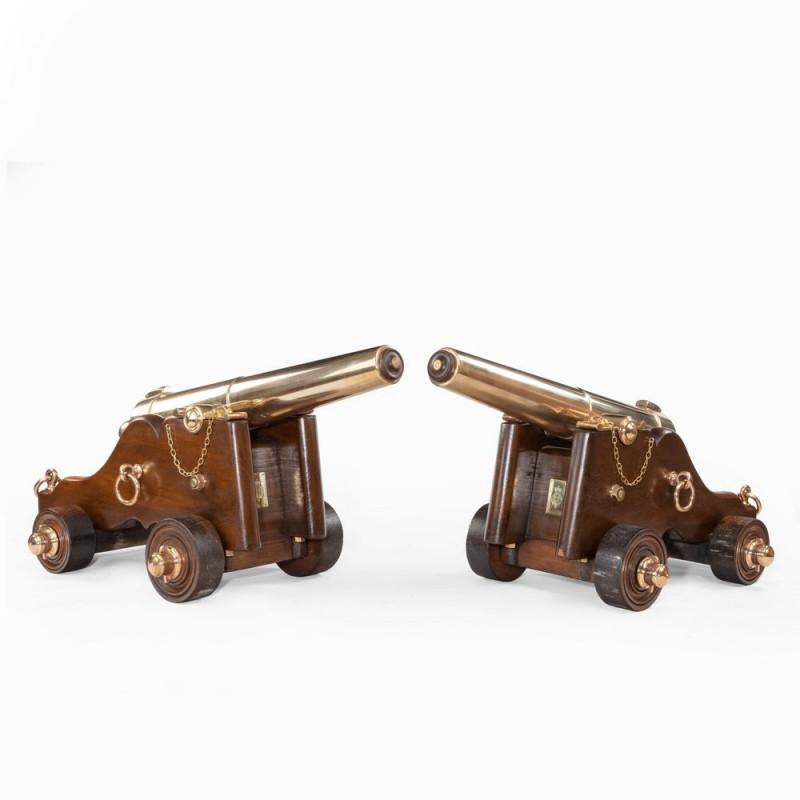
This object is eligible for a Certificate of BADA Provenance
The bada standard.
- Since 1918, BADA has been the leading association for the antiques and fine art trade
- Members are elected for their knowledge, integrity and quality of stock
- Our clients are protected by BADA’s code of conduct
- Our dealers’ membership is reviewed and renewed annually
- Bada.org is a non-profit site: clients deal directly with members and they pay no hidden fees
Royal Southampton Yacht Club Cannon.
This pair of early Victorian three-stage bronze signal cannon are set on elm carriages with bronze fittings.
Each 39 inch tapering barrel has one reduction and a ball cascabel. The trunnions have chain and pin locks and cast bronze trajectory elevation mechanisms to the rear.
English, circa 1840.
Provenance: Royal Southampton Yacht Club until the dispersal of the contents of their Ocean Village Clubhouse in 2018.
The RSYC was originally the ‘West Quay Amateur Regatta Club’ (founded in 1858) but members voted to change its name to the ‘Southampton Yacht Club’ in 1875 and the Royal and Admiralty Warrant was granted two years later.
In accordance with its new status, an imposing Victorian ‘Domestic Gothic’ style clubhouse, complete with a high ‘lookout tower’ was constructed at 79, Above Bar, Southampton.
Angela Rice in her article on the club’s history cites ‘it was said that the building apparently could, from its external appearance, have been mistaken for the Town Hall, had it not been for the four brass cannon outside’.
It is concievable that these cannon are two of the four mentioned. Despite miraculously surviving the blitz on Southampton of the night of 30th November, 1940, the building was sold for retail development and demolished in 1947.
The clubhouse moved inland to Northlands Road and then again to Ocean Village when the old Princess Alexandra Dock was transformed into the Ocean Village Marina in 1987. Earl Mountbatten of Burma (see page 112) was admiral of the club from 1965 until his assassination in 1979.
Wick Antiques Ltd
More from this dealer.
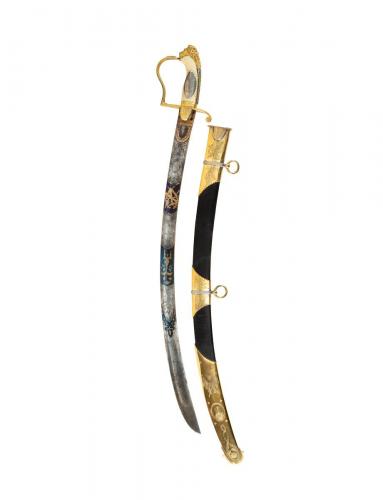
Royal Southampton Yacht Club Verified venue
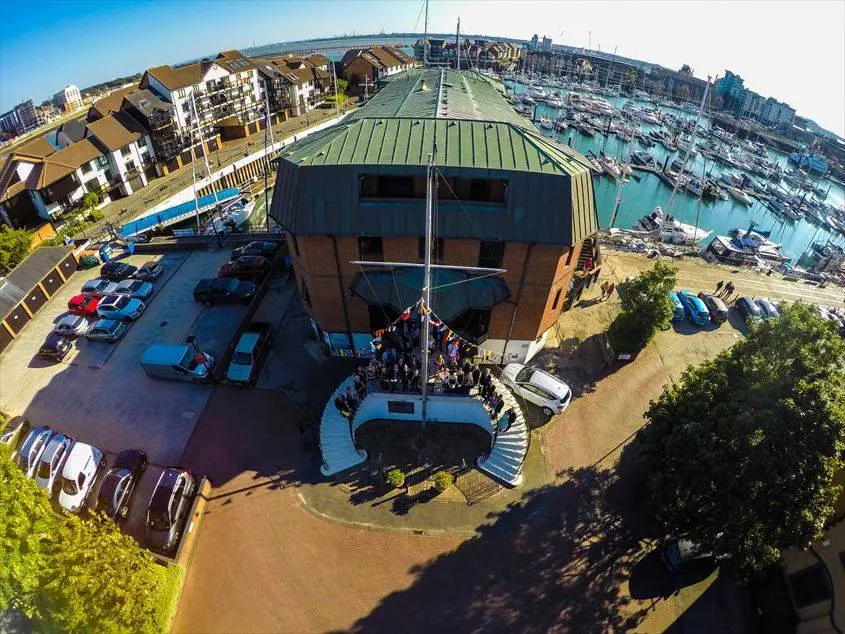
Aerial photo from drone - Aerial photo from drone
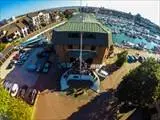
To make a booking or enquire about hiring this venue please use the contact details below - Please mention Venues for Hire
Royal Southampton Yacht Club 1 Channel Way, Ocean Village Southampton Hampshire SO14 3QF
+44 (0) 2380 210 876
Events Coordinator
Use contact form below
http://www.rsyc.org.uk/
- Email venue
- Nearby venues
- Nearby accomodation
- Nearby suppliers
Royal Southampton Yacht Club description
Business Meeting Rooms / Wedding Venue / Business Meeting Rooms / Party Venue
Medium (1-150)
Venue suitability
This venue is suitable for the following uses:
Venue facilities
Within 5 metres
Yes - Professional (manned)
6 round tables, 10 rectangle tables
Yes - Manned
Other venue facilities
Explore the rooms this venue has for hire by expanding the sections below.
The Admirals Room
The Admirals Room is situated on the upper floor of the club and offers stunning views of Ocean Village Marina. the room is perfect for private meetings, AGMs and training courses. Lift access enables full enjoyment for disabled guests. Includes: wireless broadband, flat screen TV, DVD player, credenza and retractable projection scree, adjustable lighting, 8 x 13 amp sockets
As meeting room:
For dining:
As theatre:
The Trafalgar Room
The Trafalgar Room is ideal for smaller meetings overlooking the Marina. With a nautical feel and expressing the Club's heritage, this intimate room, adjacent to the Clubhouse restaurant and bar, could be the perfect place in which to impress new clients. Lift access enables full enjoyment for disabled guests. Includes: wireless broadband, large flat screen TV and DVD, 8 x 13 amp sockets.
Situated at the heart of the building, the Clubhouse Lounge with its floor to ceiling windows on all 3 sides, offers panoramic views of the Marina. Visitors are drawn to take a peep outdoors, and the informal seating on the broad wooden balcony allows al fresco dining in a spectacular setting.
For a reception:
To prevent spam please answer the simple maths question below:
GDPR CONSENT
By using the Venues4Hire.org website you agree that we can store the personal information you have given to us.
This information will only be used to allow us to pass your enquiry onto the Venue you have selected and for that Venue to contact you in relation to your enquiry.
We will also store your IP address for a short period of time to help us prevent abuse and misuse of our system for sending spam (non-Venue enquiry related) messages.
If you have any questions about our use of your data, please contact us via our Contact page.

Report a problem
Use this form to tell us about a problem with the listing for this Venue.
Thank you for your feedback, we will look at the problem as soon as we can.
Shortlist this venue
Royal southampton yacht club.
Add this venue to your shortlist using the button below so that you can easily compare and find your favourite venues and suppliers.
You can also view your shortlist .
Note: This feature works by setting a Cookie in your browser to remember your shortlist. This will last for 7 days.
This venue is already in your shortlist, use the button below to remove it.
Get started with your planning by browsing our comprehensive lists of wedding venues in your local area. Just select the type you are looking for...
- National Venues
From wedding florists to photographers, these industry specialists provide the core services that all brides and grooms need...
- All Suppliers
- Cars & Transport
- Catering & Bars
- Marquee Hire
- Photography
- Venue Decoration
- Videography
Entertainment
Ensure that your guests have a fantastic time on your big day with these excellent wedding entertainment ideas...
- All Entertainment
- Cartoonists
- Photo Booth Hire
Bride & Groom
Find jewellery, bridal makeup and organise the important events both pre- and post-wedding here...
- All Bride & Groom
- Rings & Jewellery
Dresses & Suits
Find your ideal wedding-wear from some of these dress and groomswear specialists in your local area...
- All Dresses & Suits
- Bride & Bridesmaids
- Groom & Pageboys
Get Started...
To narrow down your search results to venues and suppliers available to you, pick your county in the list to the right. Once selected, start searching for businesses near you using the venue and supplier tabs at the top of the homepage.
The wedding secret is expanding all the time, so if you’ve yet to find something you like in your area, or your area is not yet available, check back in at a later date.
- Buckinghamshire
- East Sussex
- Oxfordshire
- West Sussex
- Bournemouth
- Gloucestershire
- Herefordshire
- Staffordshire
- Warwickshire
- West Midlands
- Worcestershire
- Northamptonshire
- Bedfordshire
- Cambridgeshire
- Hertfordshire
- South Wales

- Two clubhouses available for your wedding day
- Arrive at your ceremony by boat along the marina
- Wedding breakfast capacity of up to 110 guests
- A short distance from Southampton city centre
- In-house chefs create a range of delicious dishes
- Hold a marquee reception at the Gins Clubhouse
- Beautiful location on Southampton Marina
- Bespoke packages for each couple

Royal Southampton Yacht Club
Surrounded by wide views of the marina, the Ocean Village Clubhouse is one of two venues run by the Royal Southampton Yacht Club. You'll be able to design a wedding package to suit your exact needs, and the club's pontoons allow for the unique experience of arriving at your ceremony by boat.
Alternatively, hold a wedding under canvas by putting up a marquee on the lawns of the Gins Clubhouse. Whatever your needs and budget, the club's dedicated wedding coordinator will be able to design a day that is perfect for you.
As one of the oldest royal yacht clubs in England, the Royal Southampton is a regional treasure offering a long history of cruising, training, racing and social activities. While the club has kept many of its traditions, they also welcome new members and continue to grow with the support of local families and businesses.
This wedding venue offers the perfect scenic setting for waterfront nuptials, you can sip a celebratory champagne drink overlooking the sea. With two rustic club houses to choose from and a marquee, this venue is a fantastic blank canvas that offers panoramic views of the marina.
Uniquely, the Royal Southampton Yacht Club can provide a yacht for the newlyweds to sail to/from your ceremony to the clubhouse pool. A great photo opportunity.
Royal Southampton Yacht Club will build each couple a bespoke package, based on their specific requirements and budget.
The Ocean Village Clubhouse
The Clubhouse sits at the heart of the marina, with wide views over the water and close transport links to Southampton city centre.
Offering a romantic atmosphere in which to exchange your vows, this unique venue has adjoined balconies and private pontoons, so you and your guests can arrange for a boat to pick you up for an unusual drinks reception.
Ceremony capacity – up to 60 guests Wedding breakfast capacity – up to 110 guests Reception capacity – up to 130 guests
Gins Clubhouse
The Gins Clubhouse is situated in St Leonards, and offers beautiful views over the Beaulieu River. The lawns make the perfect place to set up a marquee for your wedding breakfast and evening reception.
Breakfast and reception capacity – up to 100 guests in a marquee
The menus at Royal Southampton Yacht Club are designed by their executive chef, and every dish is prepared on site using locally sourced, seasonal ingredients.
There are a variety of dining options for you and your guests, from canapés to buffets, formal dining or barbecues. Brides and grooms are invited to work alongside the chef to design a catering package perfect for your needs, budget and requirements.
They also pride themselves on having a well-stocked bar, so all of your guests tipple needs will be catered too.
To find out more about this unique wedding venue, get in touch using the contact buttons found below and to the side of this listing.
- Call now 02380210878
- Visit website
, Hampshire
- Phone number 02380210878
The Wedding Secret Ltd and our partners use cookies on this website to personalise content, adverts and analyse traffic. By clicking "I agree" you are consenting to the use of cookies. For more information, please review our cookie policy.

COMMENTS
A warm welcome awaits you at Royal Southampton Yacht Club, the friendliest yacht club on the Solent. Located on the Beaulieu River in Hampshire in an area of outstanding beauty, the RSYC's Clubhouse at Gins has easy access to The Solent and boasts a unique riverside clubhouse with outstanding views and excellent facilities. Join us.
The West Quay Regatta Club was formally established in 1866 but had existed for many years before that date, and was known as the "father" of the Royal Southampton Yacht Club. [3] When the cornerstone of a new clubhouse was laid in 1885, the estimated cost of the planned building with land included, was about ₤ 8000, occupying an area of ...
The Royal Southampton is a friendly yacht club offering... Royal Southampton Yacht Club, Southampton. 1,747 likes · 48 talking about this · 3,188 were here. The Royal Southampton is a friendly yacht club offering cruising, racing, training. Our Gins Clubhou
The Royal Southampton Yacht Club is one of the oldest established in England, receiving its Royal Charter in 1875. In 1885 a new and imposing Clubhouse was developed in Above Bar, Southampton, which stood until 1957 when the Club was relocated to Northlands Road.
Koris sponsor the Royal Southampton Yacht Club Double Handed Racing Series The Commodore, Brian Hinde, left, welcomes Donna Redford at the Club's AGM. Mr Stocks is moving to a new post in rugby football Add your Upcoming Events Find out how to add Royal Southampton Yacht Club events to the YachtsandYachting.com Calendar here. ...
original Royal Southern Yacht Club Club House, 1 Bugle Street. It was established in 1837 in Southampton as the Royal Southampton Yacht Club and was given Royal patronage by Queen Victoria. The original Club House, which still stands opposite Southampton's Royal Pier, was built in 1846. Its archives record the annual regattas, the parlous state ...
Related Articles MDL Marinas partners with Royal Southampton YC New 24-month partnership will see MDL Marinas provide berthing at its flagship Ocean Village Marina Supporting the local sailing community, MDL Marinas is delighted to announce it has become the boat and title race sponsor of the Royal Southampton Yacht Club's (RSYC) Southampton Water and Double-Handed race series.
A new general manager has been appointed at the Royal Southampton Yacht Club, and takes up duties on February 21. Commodore Anthony Knight announced...
Club History A History of The Royal Southern Yacht Club Est. 1837 At almost 200 years of age, the Royal Southern boasts a rich history of toil and ultimate success - the proof of which stands in the excellence of ... When our club came into existence in 1837 it was called the Royal Southampton Yacht Club. It was 'established by a party of ...
About The Bugle. Built as the home of the Royal Southern Yacht Club in 1846, The Bugle is an iconic landmark building overlooking Southampton's Royal Pier on Bugle Street, one of the most historic streets within the old walled city. Designed by local architect Thomas Sandon Hack, the Grade II-listed Italianate townhouse is widely regarded as ...
Contact us Royal Southampton Yacht Club 1 Channel Way Ocean Village Southampton SO14 3QF Telephone: 02380 223 352 Fax: 02380 330 613 Email: [email protected] Web: www.rsyc.org.uk VHF Channel 77 ...
Celebrate your wedding in style at the Royal Southampton Yacht Club's Ocean Village Clubhouse. The venue offers a stylish setting and a friendly atmosphere with a fantastic location near the both the sea and Southampton's city centre. The Clubhouse, full of rich heritage and impressive memorabilia, offers the perfect venue for your big day, right at the heart of the prestigious marina. The ...
"The Royal Southampton Yacht Club is very excited to add MDL's name to its 2024 Southampton Water and Double-Handed race programmes," says Robin Funnell, Commodore at the RSYC. "Our double-handed racing series is the longest established series of its kind, and hosting regular racing of this type is only possible with the help of ...
Royal Southampton Yacht Club Cannon. This pair of early Victorian three-stage bronze signal cannon are set on elm carriages with bronze fittings. Each 39 inch tapering barrel has one reduction and a ball cascabel. The trunnions have chain and pin locks and cast bronze trajectory elevation mechanisms to the rear. English, circa 1840. Provenance: Royal Southampton Yacht Club until the dispersal ...
The Royal Southampton Yacht Club | 101 followers on LinkedIn.
The Royal Southampton is the region's premier yacht club offering a wide range of cruising, racing, training and social activities throughout the year. We were awarded our Royal Charter in 1875 which makes us one of the oldest royal yacht clubs in the country.
Address. 1 Channel Way. Ocean Village. Southampton. Hampshire. SO14 3QF. With two clubhouses boasting beautiful views, you'll be able to design your perfect wedding day at the Royal Southampton Yacht Club. Arrange for a boat to take your guests on an unforgettable drinks reception from the club's pontoons.